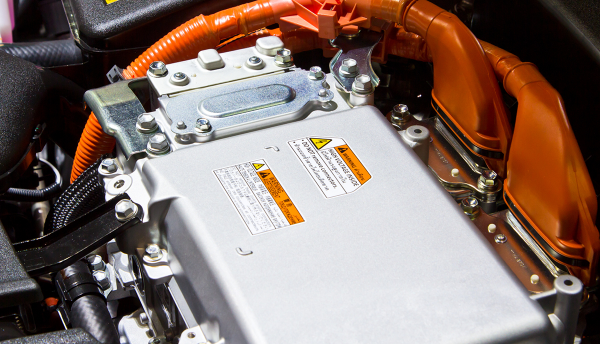
Geopolitical issues and supply chain risks hinder global EV transition.
The global electric vehicle (EV) transition faces hurdles due to geopolitical turbulence and vulnerability in the critical raw-material supply chain, risking a slowdown in battery production expansion.
Oscillating prices of essential battery metals are putting pressure on supplier and original equipment manufacturer profits, leading to increased component and vehicle prices. Complicating the EV transition is trade friction, evidenced by the Inflation Reduction Act’s (IRA’s) activities in the US and mainland China's recent limitations on graphite exports.
The latest research from S&P Global Mobility Auto Supply Chain & Technology Group underscores the necessity of a diverse supply chain for raw materials, such as lithium, nickel and cobalt.
Lithium iron phosphate (LFP), celebrated for its cost-effectiveness in accessing segments of the EV market that other chemistries struggle to penetrate, must address several supply chain challenges before achieving greater prevalence in the low-cost sector. In contrast to mainland China's monopoly on the LFP battery supply chain, LFP holds an advantage for the markets in Europe and North America due to the abundance and geographical distribution of its key elements, iron and phosphorus. These regions already produce large volumes of phosphoric acid and iron compounds. However, the main challenge in creating a local supply is the production of the cathode active material, a process that has matured in mainland China due to their exclusive licensing rights.
For example, S&P Global Mobility's latest analysis reveals a high level of vertical integration between extraction and high-purity phosphoric acid production sites. High-purity phosphoric acid, traditionally produced through a high-impact thermal process, is now trending toward a "wet" process with lower carbon emissions, especially as recent advancements have overcome previous technical obstacles. Although the phosphorus demand for EV batteries seems insignificant compared with the overall phosphate industry, supply constraints are anticipated due to the need for high-purity grades in battery production.
Also anticipated is a shift toward ammonium dihydrogen phosphate as a precursor for LFP and lithium manganese iron phosphate (LMFP) production. Iron, being a highly abundant material, is readily available. In mainland China, it is inexpensively sourced as a by-product of the titanium dioxide production process. Historically, exclusive licensing rights for LFP cathode production limited the supply chain to mainland China, but with patent obsolescence in 2021, global players now have a cost-competitive opportunity.
Companies in North America and Europe, such as Nano One, are entering the LFP market, providing a decentralized supply chain compared with NCM (Lithium Nickel Manganese Cobalt Oxide) batteries. The Canadian startup advocates for a one-pot approach, bypassing the precursor in cathode active material production. Adam Johnson, Senior Vice President, External Affairs, Nano One, told S&P Global Mobility: “Our one-pot process cuts cost, complexity, energy intensity and equipment from the cathode materials supply chain, enabling sulphate-free raw material inputs that are decoupled from mainland Chinese supply chains. In doing so, it also reduces greenhouse gas emissions and eliminates wastewater and large volumes of harmful by-products.” The company anticipates a global footprint for its technology and production plants. “Nano One has a design-once-build-many commercialization strategy, which envisions its technology and production plants being licensed, built and operated in jurisdictions around the globe, leveraging the security of localized supply chains while providing the broader EV and energy storage markets with rapidly deployable, cost competitive and environmentally differentiated solutions for the production of cathode materials.”
The study examines the entire battery raw material supply chain from mining to battery production, encompassing all major processing steps. Mainland China's dominance in materials refining and battery assembly raises concerns about industry transformation dependence. Projections for 2030 identify Tesla, Volkswagen, General Motors (GM) and Stellantis as major players in nickel demand. Proposed are modular battery packs for resilience against raw material constraints.
Concerns about cobalt access and ethical supply are explored, with a focus on reduced reliance on the Democratic Republic of Congo. The study predicts a shifting supply landscape, prompting the US to address imbalances through domestic supply chain incentives. It outlines the journey of materials used in battery production, covering mining to the manufacturing of batteries. It details suppliers and recipients at each stage of the value chain, along with trade quantities measured in metric tons. The focus is on demand projections, excluding the supply aspect.
Phase 1 of the forecast includes materials, such as cathode active material, nickel and lithium. In Phase 2, aluminum, iron and phosphate were added to highlight the supply chain of iron-based chemistries, such as LFP and LMFP.
The battery industry, crucial for the next decade, is poised to be a battleground, with S&P Global Mobility monitoring real-time changes. To learn more, read our Battery Raw Materials Forecast.